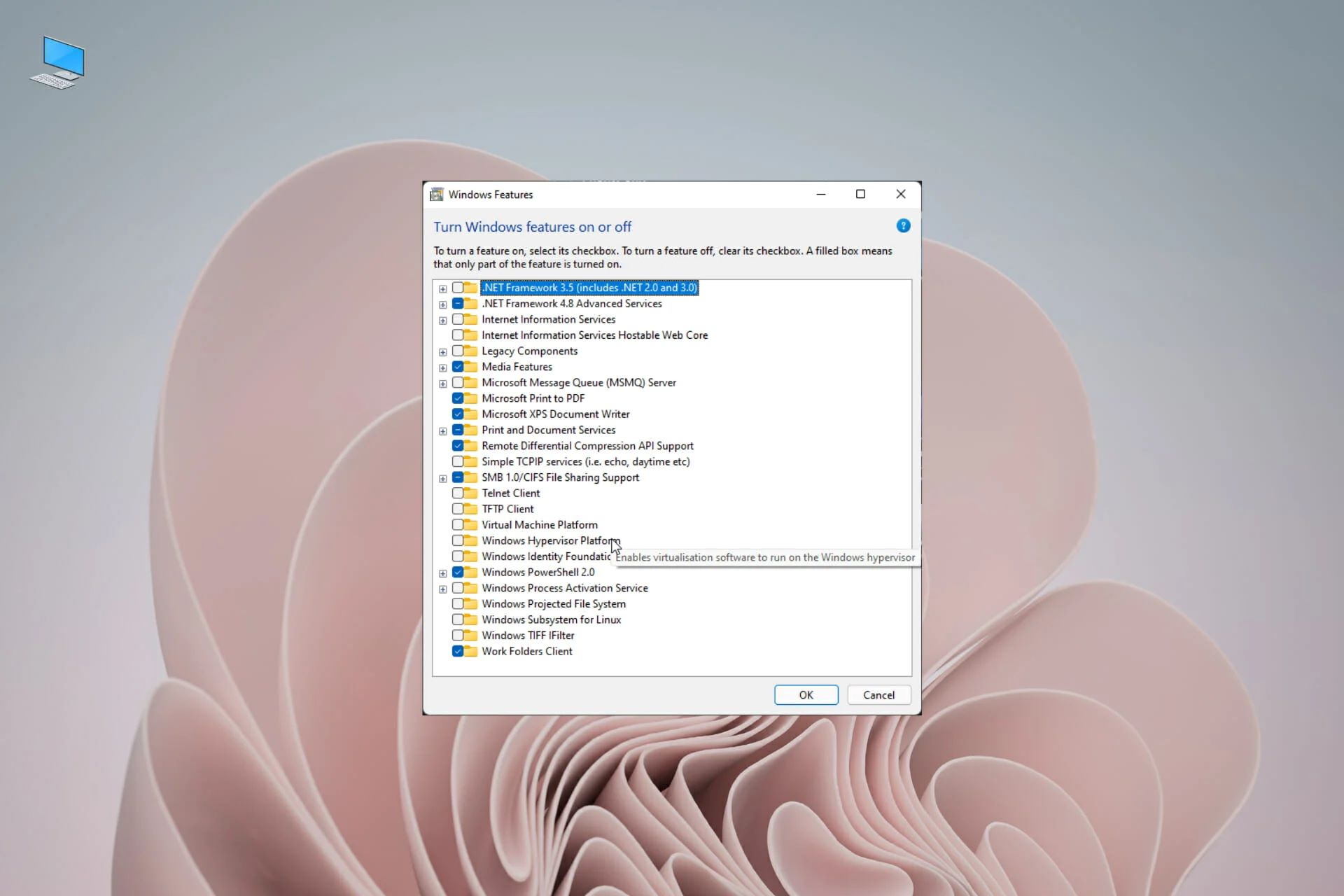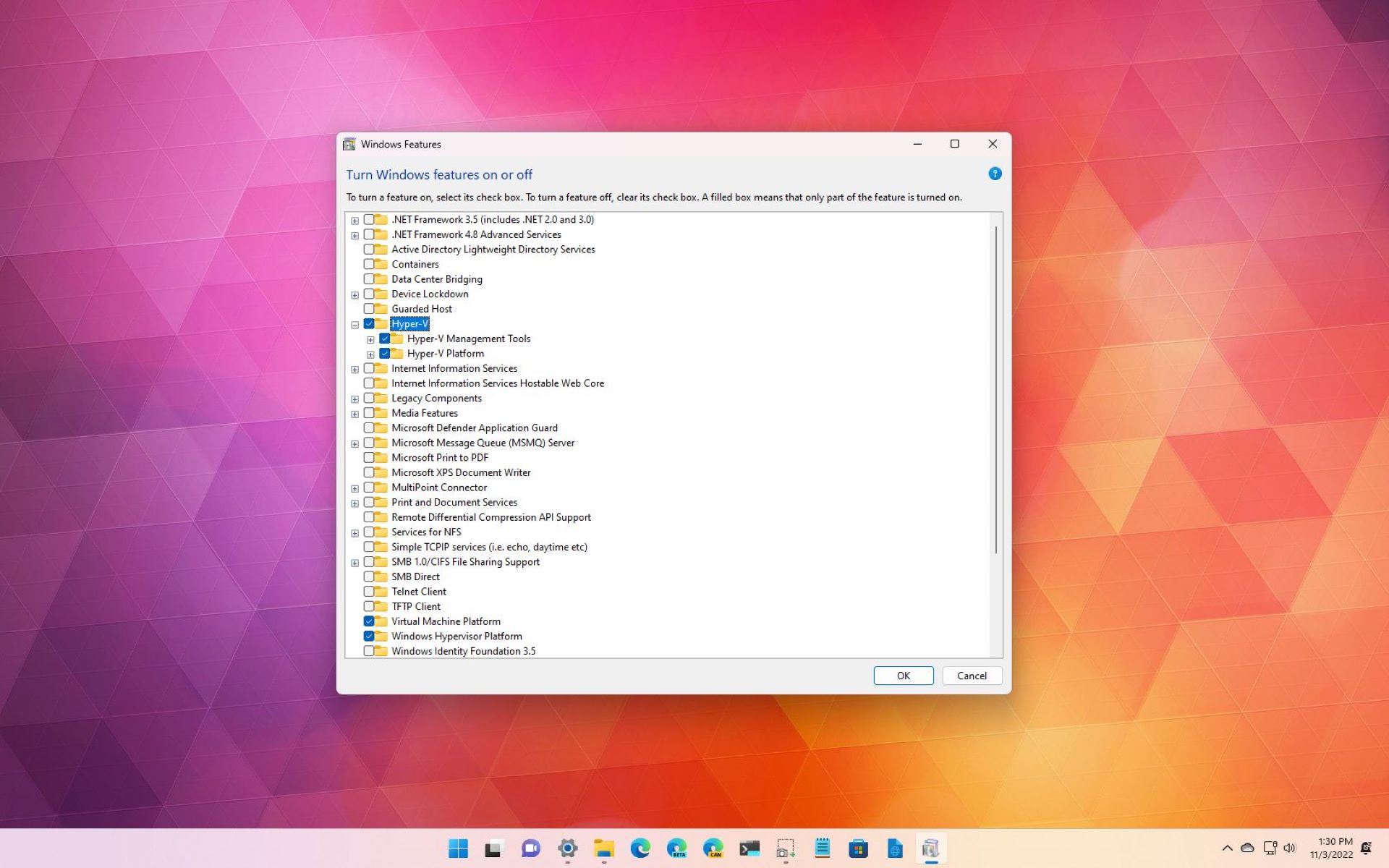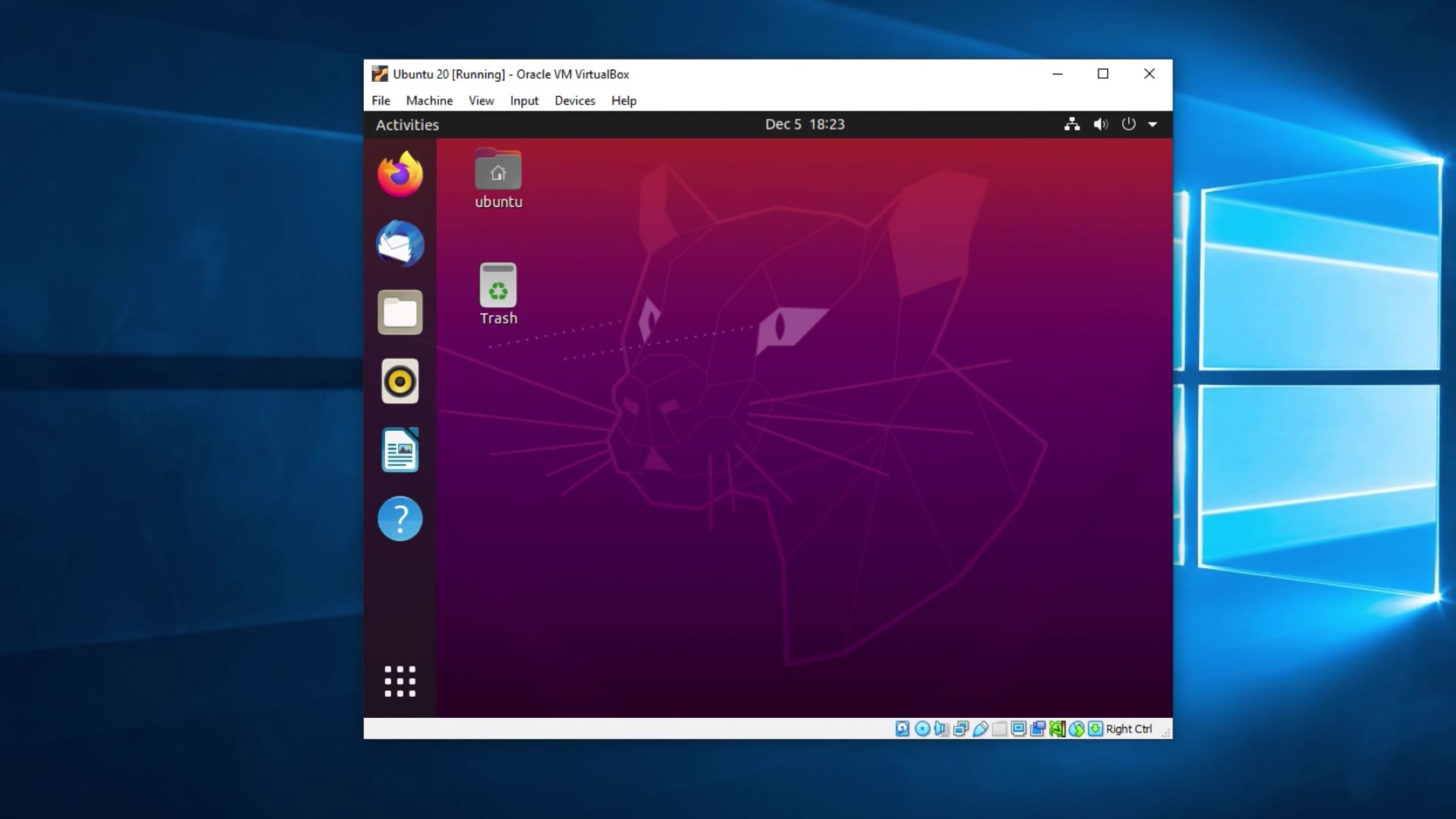Introduction
Welcome to this comprehensive guide on how to turn off a virtual machine in Windows 10. Virtual machines have become an essential tool for a wide range of purposes, including software development, network testing, and running multiple operating systems on a single computer. However, knowing how to properly shut down a virtual machine is crucial to ensure data integrity and avoid potential complications.
In this article, we will explore several methods you can use to turn off a virtual machine in Windows 10 effectively. Whether you prefer using the built-in shutdown option, the Hyper-V Manager, the Command Prompt, PowerShell, or the Virtual Machine Connection Tool, we’ve got you covered.
Before we dive into the details, it’s worth noting that safely turning off a virtual machine is important to prevent file corruption and potential data loss. Just like shutting down a physical computer, closing a virtual machine properly ensures that all running processes complete their tasks and that data is saved correctly.
So, whether you’re a beginner or an experienced user, this guide will provide you with step-by-step instructions for turning off virtual machines in different ways, catering to different preferences and needs. By following these methods, you’ll be able to shut down your virtual machines smoothly and efficiently, ensuring that your work and data are protected.
Now, let’s explore each method in detail, so you can choose the one that suits you best.
Method 1: Using the Shutdown Option
One of the easiest and most straightforward ways to turn off a virtual machine in Windows 10 is by using the shutdown option provided within the virtual machine itself.
To begin, you need to have the virtual machine window or console open on your desktop. Look for the Start menu or power button icon within the virtual machine’s operating system.
Click on the Start menu or power button icon and you will see a list of options. Locate the “Shutdown” or “Turn off” option and click on it. This action will initiate the shutdown process and gracefully close down all running processes within the virtual machine.
It’s important to note that just like shutting down a physical computer, it may take some time for the virtual machine to complete the shutdown process, especially if there are pending tasks or applications running within it.
Once the shutdown process is complete, the virtual machine will power off, and you can safely close the virtual machine window or console.
Using the shutdown option within the virtual machine is the preferred method if you are operating the virtual machine in a graphical interface environment, as it provides an intuitive and user-friendly way to turn off the virtual machine.
However, keep in mind that while this method is convenient, it may not always be available or suitable for all types of virtual machines. In such cases, you can explore alternative methods that we will discuss in the following sections.
Method 2: Using the Hyper-V Manager
If you’re using Microsoft’s Hyper-V virtualization technology in Windows 10, you can use the Hyper-V Manager to easily turn off virtual machines.
To start, open the Hyper-V Manager. You can do this by searching for “Hyper-V Manager” in the Start menu or by using the Run dialog (press Windows key + R and type “virtmgmt.msc” followed by Enter).
Once the Hyper-V Manager is open, you’ll see a list of virtual machines in the main window. Locate the virtual machine that you want to turn off and right-click on it.
In the context menu that appears, select the “Turn Off” option. This will initiate the shutdown process for the selected virtual machine.
Similar to the previous method, the virtual machine will go through the shutdown process, and it may take some time to complete depending on the running processes and applications within the virtual machine.
Once the virtual machine has successfully shut down, you can close the Hyper-V Manager.
Using the Hyper-V Manager is an efficient method when you have multiple virtual machines running and need to turn them off selectively or manage them from a centralized interface.
However, keep in mind that the Hyper-V Manager is specific to Windows 10 Pro, Enterprise, and Education editions, so if you’re using a different edition of Windows 10 or another virtualization platform, you’ll need to explore alternative methods.
Method 3: Using the Command Prompt
If you prefer using the command line interface, you can turn off a virtual machine in Windows 10 using the Command Prompt.
To begin, open the Command Prompt. You can do this by searching for “Command Prompt” in the Start Menu or by using the Run dialog (press Windows key + R and type “cmd” followed by Enter).
Once the Command Prompt is open, you need to navigate to the location of the virtual machine management tools. This is typically located in the “C:\Program Files\Oracle\VirtualBox” folder for Oracle VM VirtualBox or in the “C:\Program Files\VMware\VMware Workstation” folder for VMware Workstation. Use the `cd` command to change the directory to the appropriate location.
Next, type the command to turn off the virtual machine. For example, if you’re using Oracle VM VirtualBox, you can use the following command:
VBoxManage controlvm [virtual_machine_name] poweroff
Replace [virtual_machine_name] with the actual name of your virtual machine. Press Enter to execute the command.
If you’re using VMware Workstation, the command differs slightly:
vmrun stop "[path_to_vm.vmx]" hard
Replace [path_to_vm.vmx] with the actual path to your virtual machine’s .vmx configuration file. Press Enter to execute the command.
After executing the command, the virtual machine will begin shutting down. It may take a few moments for the shutdown process to complete.
Once the virtual machine has successfully turned off, you can close the Command Prompt.
Using the Command Prompt method provides a quick and efficient way to turn off virtual machines, especially if you’re comfortable with the command line interface. It also allows for scripting and automation if you need to perform multiple operations on virtual machines simultaneously.
However, keep in mind that this method requires familiarity with the command line and the specific commands for your virtualization software.
Method 4: Using PowerShell
PowerShell is a powerful command-line shell and scripting language that can be used to manage and control virtual machines in Windows 10. By utilizing PowerShell, you can easily turn off virtual machines with just a few commands.
To get started, open PowerShell. You can do this by searching for “PowerShell” in the Start Menu or by using the Run dialog (press Windows key + R and type “powershell” followed by Enter).
Once PowerShell is open, you need to navigate to the location of your virtualization software’s PowerShell management module. This could be the Hyper-V module or modules specific to other virtualization platforms such as VMware or VirtualBox. Use the `cd` command to change the directory to the appropriate location.
Next, you can use the specific PowerShell cmdlets provided by your virtualization software to turn off the virtual machine. For example, if you’re using Hyper-V, you can use the following command:
Stop-VM -Name [virtual_machine_name] -Force
Replace [virtual_machine_name] with the actual name of your virtual machine. Press Enter to execute the command.
If you’re using VMware or VirtualBox, there are separate PowerShell modules available that provide similar functionality. Refer to the documentation or online resources specific to your virtualization software for the appropriate PowerShell cmdlets.
After executing the command, the virtual machine will begin to shut down. Depending on the running processes and applications within the virtual machine, it may take some time to complete the shutdown process.
Once the virtual machine has successfully turned off, you can close PowerShell.
Using PowerShell to turn off virtual machines provides a flexible and scriptable approach, allowing you to automate complex tasks or perform bulk operations on multiple virtual machines. It’s especially useful for managing virtual machines in large-scale environments.
However, it’s important to have a good understanding of PowerShell and the specific cmdlets for your virtualization software to ensure proper usage.
Method 5: Using the Virtual Machine Connection Tool
If you’re using the Windows Virtual Machine Connection tool, turning off a virtual machine is a simple and straightforward process.
To begin, open the Virtual Machine Connection tool. You can do this by locating the virtual machine in the Hyper-V Manager, right-clicking on it, and selecting the “Connect” option.
Once the Virtual Machine Connection window is open, you will see a toolbar at the top. Locate the power button icon within the toolbar.
Click on the power button icon, and you will see a drop-down menu with different options. Select the “Shut Down” option to initiate the shutdown process for the virtual machine.
The virtual machine will go through its shutdown process, and it may take some time to complete, depending on the running processes and applications within the virtual machine.
Once the virtual machine has successfully shut down, you can close the Virtual Machine Connection window.
Using the Virtual Machine Connection tool provides a seamless and user-friendly way to turn off virtual machines, especially if you’re managing virtual machines through Hyper-V. It allows you to have a dedicated interface for each individual virtual machine, simplifying the management process.
However, keep in mind that this method is specific to Windows 10 editions that support Hyper-V. If you’re using a different edition of Windows or another virtualization platform, you may need to explore alternative methods.
Tips for Safely Turning Off Virtual Machines
Ensuring the safe shutdown of virtual machines is crucial to protect your data and maintain the stability of your virtualized environment. Here are some tips to help you safely turn off virtual machines:
1. Save your work: Before shutting down a virtual machine, make sure to save any unsaved work or close applications properly within the virtual machine. This will prevent data loss and ensure that everything is in a stable state before powering off.
2. Allow time for shutdown: Depending on the size of your virtual machine and the processes running within it, the shutdown process may take some time. Be patient and allow the virtual machine enough time to properly shut down and complete any pending tasks.
3. Avoid sudden power loss: Abruptly powering off a virtual machine can lead to file corruption and data loss. Avoid unplugging the virtual machine or shutting down the host computer without properly turning off the virtual machines first.
4. Check for shared resources: If you’re using shared resources such as shared folders or network connections within the virtual machine, ensure that any ongoing file transfers or network activities are completed or paused before shutting down.
5. Backup important data: It’s always a good practice to regularly back up your important data within the virtual machine. This allows you to restore your data in case of any unexpected issues or accidents during the shutdown process.
6. Monitor system resources: Keep an eye on the system resources, such as CPU and memory utilization, in your virtual machine. If there are any resource-intensive processes running, consider stopping or pausing them before initiating the shutdown.
7. Follow proper shutdown sequence: If you have multiple virtual machines running in a connected environment, it’s important to follow the proper shutdown sequence. Shut down dependent virtual machines before shutting down any parent virtual machines or related services.
8. Keep virtual machine tools up to date: Ensure that you have the latest updates and patches for your virtual machine management tools and virtualization software. This helps to address any known issues or bugs that may affect the shutdown process.
By following these tips, you can ensure a smooth and safe shutdown process for your virtual machines, minimizing the risk of data loss and maintaining the integrity of your virtualized environment.
Conclusion
In this comprehensive guide, we explored various methods for turning off virtual machines in Windows 10. Whether you prefer using the built-in shutdown option, the Hyper-V Manager, the Command Prompt, PowerShell, or the Virtual Machine Connection Tool, there are several ways to accomplish this task.
We started by discussing the use of the shutdown option within the virtual machine itself. This method is straightforward and user-friendly, making it a convenient choice for shutting down virtual machines.
We then moved on to using the Hyper-V Manager, which is useful for managing multiple virtual machines from a centralized interface.
Next, we covered the use of the Command Prompt, which provides a command-line approach to turning off virtual machines. This method is highly flexible and allows for scripting and automation.
Using PowerShell was the next method we explored. PowerShell offers powerful management capabilities and is particularly useful for managing virtual machines in large-scale environments.
Lastly, we discussed the use of the Virtual Machine Connection tool, which provides a dedicated interface for each virtual machine, simplifying the management process.
To ensure the safe shutdown of virtual machines, we provided some tips, including saving your work before shutting down, allowing time for the shutdown process, avoiding sudden power loss, and backing up important data regularly.
By following these methods and tips, you can confidently and safely turn off virtual machines in Windows 10, protecting your data and maintaining the stability of your virtualized environment.
Remember to choose the method that best suits your needs and virtualization software, and always keep your virtual machine management tools up to date for optimal performance.
Now that you have a solid understanding of the various methods for turning off virtual machines, you can efficiently manage your virtualized environment and power off virtual machines as needed.

























